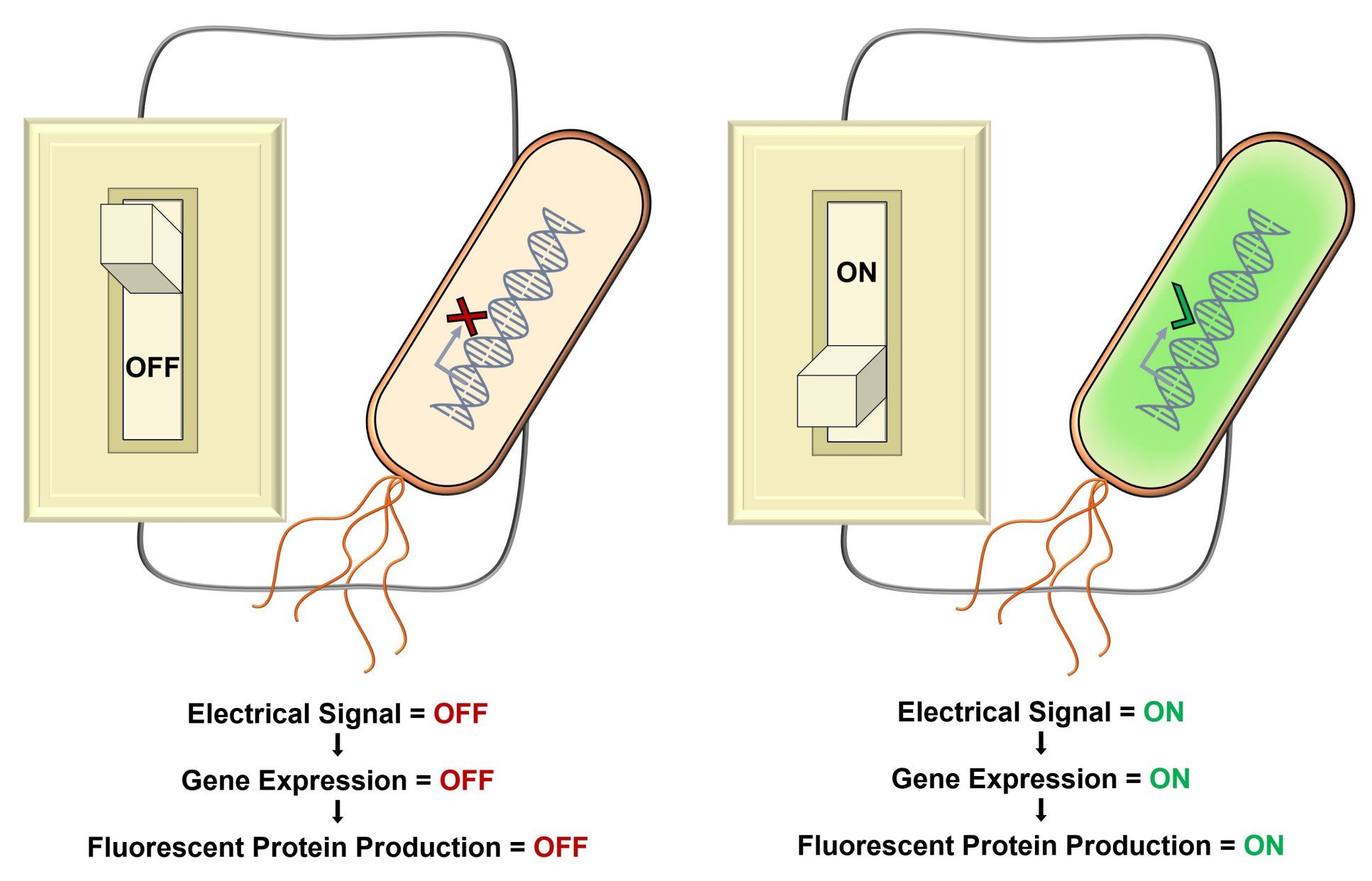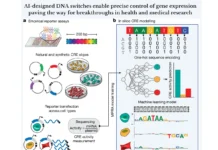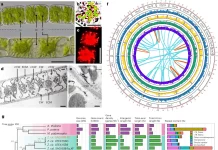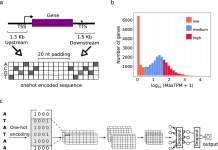Scientists have developed a new approach for harnessing electrical signals to turn genes on and off.
A team led by Imperial College London experts has created a new way for precisely altering gene expression by adding and withdrawing electrons. Experts from Imperial College’s Departments of Chemistry, Life Sciences, and Bioengineering, the Imperial College Translation & Innovation Hub, Cambridge University, and the University of Milan collaborated on the study.
The tool can be developed and integrated into a range of bioelectronics applications, such as medical and environmental biosensors. The electrochemical regulation of gene expression in relatively high volume cultures also implies a potential application in large bioreactors where optogenetic techniques are not feasible due to insufficient light penetration.
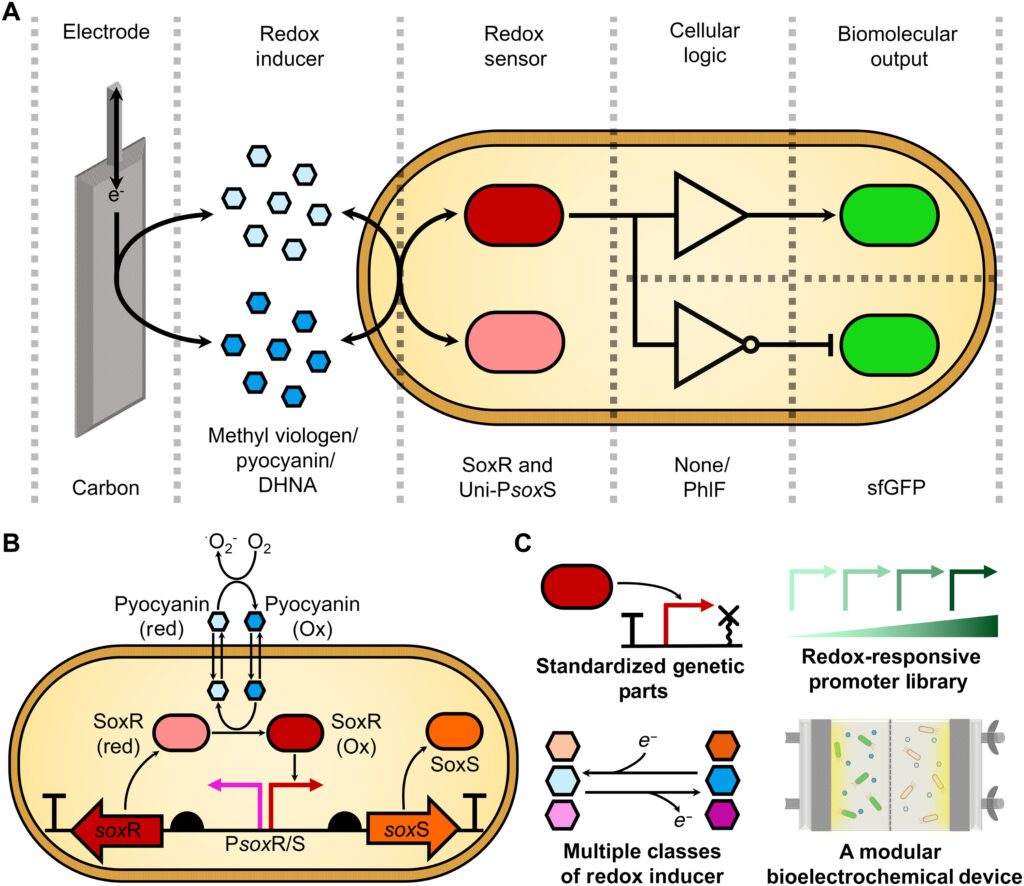
Image Source: Synthetic biology and bioelectrochemical tools for electrogenetic system engineering
Gene expression is the ‘activation’ of genes in order for them to make new molecules and have other effects on cells. Promoters are DNA regions that govern gene expression in organisms. Inducible promoters are promoters that can respond to a variety of stimuli, including light, chemicals, and temperature.
Controlling gene expression using electricity has opened up a new avenue of research, and while similar electrogenetic systems have been identified in the past, they lacked precision when electrical impulses were present or absent, limiting their usefulness. For the first time, electrical stimuli in bacteria can be used to achieve such accuracy using the novel proposed approach with tailored promoters.
We hope that by further developing these tools, we really will be able to control biological systems with a flick of a switch.
-- Joshua Lawrence
The flick of a switch
"A major issue in synthetic biology is that it is hard to control biological systems in the way we control artificial ones. If we want to get a cell to produce a specific chemical at a certain time we can't just change a setting on a computer – we have to add a chemical or change the light conditions.
"The tools we've created as part of this project will enable researchers to control the gene expression and behaviour of cells with electrical signals instead without any loss in performance.
"We hope that by further developing these tools we really will be able to control biological systems with a flick of a switch."
-- Joshua Lawrence, Co-lead author
The PsoxS promoter was modified in this study to respond more robustly to electrical stimuli delivered by electron delivery. The newly designed PsoxS promoters could not only activate but also suppress gene expression.
Electrically induced gene expression has been difficult to carry out in the presence of oxygen, which has limited its application in real-world settings. The novel approach can be duplicated across different species of bacteria and employed in applications such as medical implants and bioindustrial operations because it is viable in the presence of oxygen.
Electrochemical instruments can be tuned to a precise level for different activities by changing the electrode potential.
Producing a glowing bacteria
Biomedical implants frequently use stimulation to cause the body to manufacture a particular medication or hormone. Not all stimuli are appropriate; for example, light cannot penetrate the human body, and chemical consumption might be hazardous. Electric stimulation can be delivered directly and safely using electrodes.
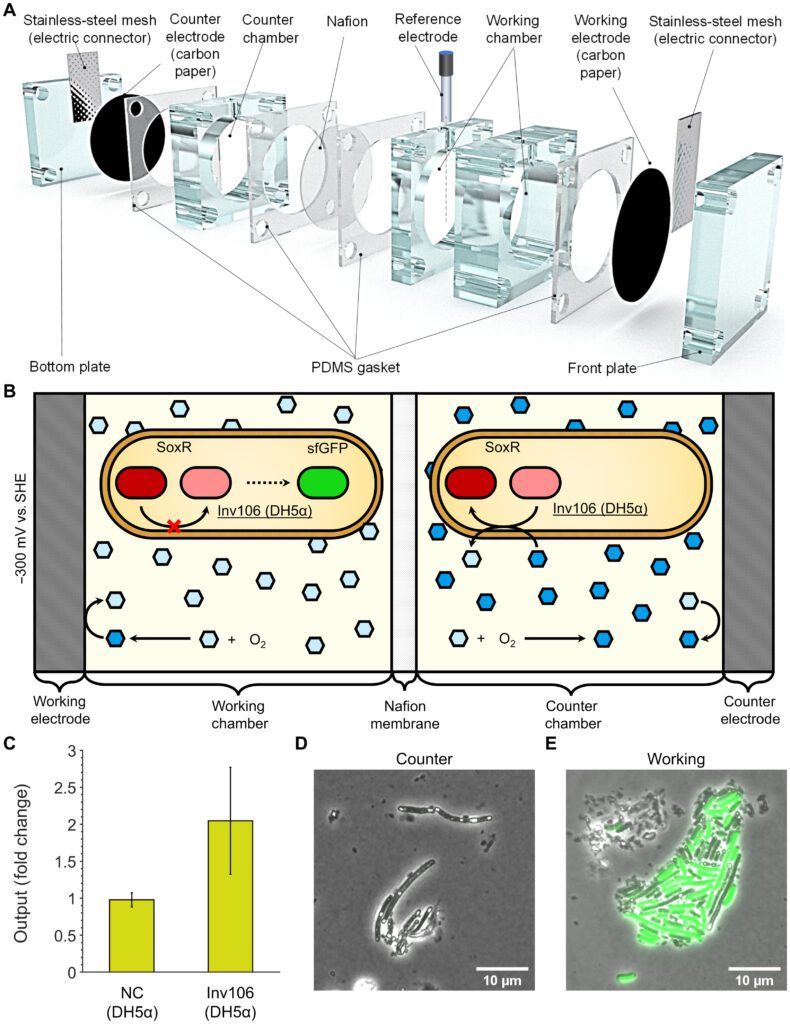
Image Source: Synthetic biology and bioelectrochemical tools for electrogenetic system engineering
The huge volume of culture in big bioreactors (often the size of a building) that create chemicals, pharmaceuticals, or fuels can be difficult to penetrate with light and costly to feed with chemical inducers, therefore, electron delivery provides a solution.
The researchers employed the ‘glowing’ protein from jellyfish as a proof-of-concept study, using the new promoter and electrons to drive its expression in bacteria, causing the cells to glow only when the system was turned on. In a distinct configuration of the system, researchers developed a bacteria that was glowing when the system was ‘off’ and ceased glowing while the system was ‘on.’
"The project originated as a blue sky idea during a synthetic biology student competition. Thanks to strong dedication, years of work and a great team effort, that initial idea was turned into a reality and we now have a variety of new technologies to use electricity to control the fate of cells."
-- Dr. Rodrigo Ledesma Amaro, lecturer at Imperial College London and RLAlab research group leader
Assembling a library
The researchers are now working on different promoters that will act to trigger diverse downstream components, allowing simultaneous electrical signals to express multiple unrelated genes. The current approach can be extended for usage in yeast, plants, and animals by expanding the library of promoters and downstream components.
The research that Joshua Lawrence carried out, currently at the University of Cambridge, and Yutong Yin, currently at the University of Oxford, was supervised by Dr. Ledesma-Amaro, from the Department of Bioengineering at Imperial.
Story Source: Joshua M. Lawrence et al, Synthetic biology and bioelectrochemical tools for electrogenetic system engineering, Science Advances (2022). DOI: 10.1126/sciadv.abm5091 https://www.imperial.ac.uk/news/235858/scientists-engineer-tools-electronically-control-gene/
Dr. Tamanna Anwar is a Scientist and Co-founder of the Centre of Bioinformatics Research and Technology (CBIRT). She is a passionate bioinformatics scientist and a visionary entrepreneur. Dr. Tamanna has worked as a Young Scientist at Jawaharlal Nehru University, New Delhi. She has also worked as a Postdoctoral Fellow at the University of Saskatchewan, Canada. She has several scientific research publications in high-impact research journals. Her latest endeavor is the development of a platform that acts as a one-stop solution for all bioinformatics related information as well as developing a bioinformatics news portal to report cutting-edge bioinformatics breakthroughs.

